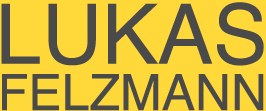Artweek, The Calls of the Wild, “Lukas Felzmann at Olga Dollar Gallery”, by Terri Cohn,
January 21, 1993, Vol. 24.
A fascination with flight is at least as ancient as recorded history. Throughout the ages, many peoples have drawn upon the attributes of birds as means of codifying culture, reflected in dance, costume and masks. Greek mythology, for example, is filled with the human desire to be airborne. Leonardo’s fascination with wings prompted him to study birds throughout his life, to create visionary drawings and descriptions of their movements, and to attempt to construct a flying machine. For recent artists, the metaphoric and connotative richness of the bird has led individuals as different as Reiko Goto, Victor Zaballa and Ray Beldner to designate them as universally meaningful cultural signifiers. In this tradition Lukas Felzmann’s Fragments of Flight, an Installation at Olga Dollar Gallery, provides an evocative late twentieth century perspective on avian iconology.
Compromised of disparate components that must first be contemplated individually, Felzmann’s installation “fragments” have broad conceptual links that bind them into a multifaceted whole, and the initial key to the holistic relationship between these distinct but compatible elements can be found in the haunting sound of bird calls that is audible before one even reaches the gallery. The magic promised by this sonorous soundscape is well matched by much of the work in the installation itself.
In considering individual pieces more closely, it becomes clear that the artist chose the title carefully, as the concept of “fragments” and facets of “flight” are closely explored. One of Felzmann’s primary interests is the abstract patterning intrinsic in feathers and flocks in motion, and such images- separately and in concert- dominate the exhibition. Within this parameter, his investigation ranges from homage to the shape, optical patterning and composition of a single wing, to an appreciation of the texture, line and geometry of the flocks in nature. The triptych Blackbirds/Flock Movement #1 is an example of this tendency. In this series of black and white photographs, Felzmann has captured the painterly quality of throngs of birds, which enables them to serve as brush strokes that form larger shapes, clustered around (telephone) lines stretched across the visible horizon of each frame. These studies are complemented by underlying fields of gras,s that provide contrasting texture. The abstract interplay within these compositions is far more dynamic than Felzmann’s numerous black and white shots of isolated airborne flocks, such as Migration and Blackbirds, which by their sheer repetitiveness form a droning ennui.
Conceptually, this aspect of Felzmann’s work is most prosaic, the balance of the installation being composed of more cerebral and intangible references to birds and flight. Such is the case with Echo, which creates a visual analogy of our common heard-but-not-seen experience of birds with an open, wall-mounted suitcase that contains the works title, and Felzmann’s untitled memorabilia shelf, which includes no birds but instead features snapshots of a boy, traintracks in the snow, and other vaguely disconcerting references to human flight. Other pieces- an old photograph of the same boy, dwarfed by a fossil fowl; the fetus like photo of a spiral shell relict captured in Spiral; and Flight from Paradise, Felzmann’s manipulated appropriation of Dürer’s Garden of Eden- demonstrate his investigation of the rich connotative potential of historic recapitulation. Felzmann carries the investigation of flight to its somewhat extreme conclusion with Daydreaming and Blackboard, his “aerial” furniture, which transports the eye on literal and figurative planes. The latter, a huge winged slate, isw especially evocative, for it suggests the lofty destiny of knowledge.
Felzmanns autobiographical tendencies are concretized in Self Portrait (Body and Soul), a complex, collaged photographic and X-ray image, which appears to be both a winged torso and a spectral human with arms raised in flight. Both touching and somewhat sentimental, the piece ultimately serves to directly epitomize Felzmanns’s fantasies and self-image, providing a explicative link with his more symbolically and individually articulated allusions.
